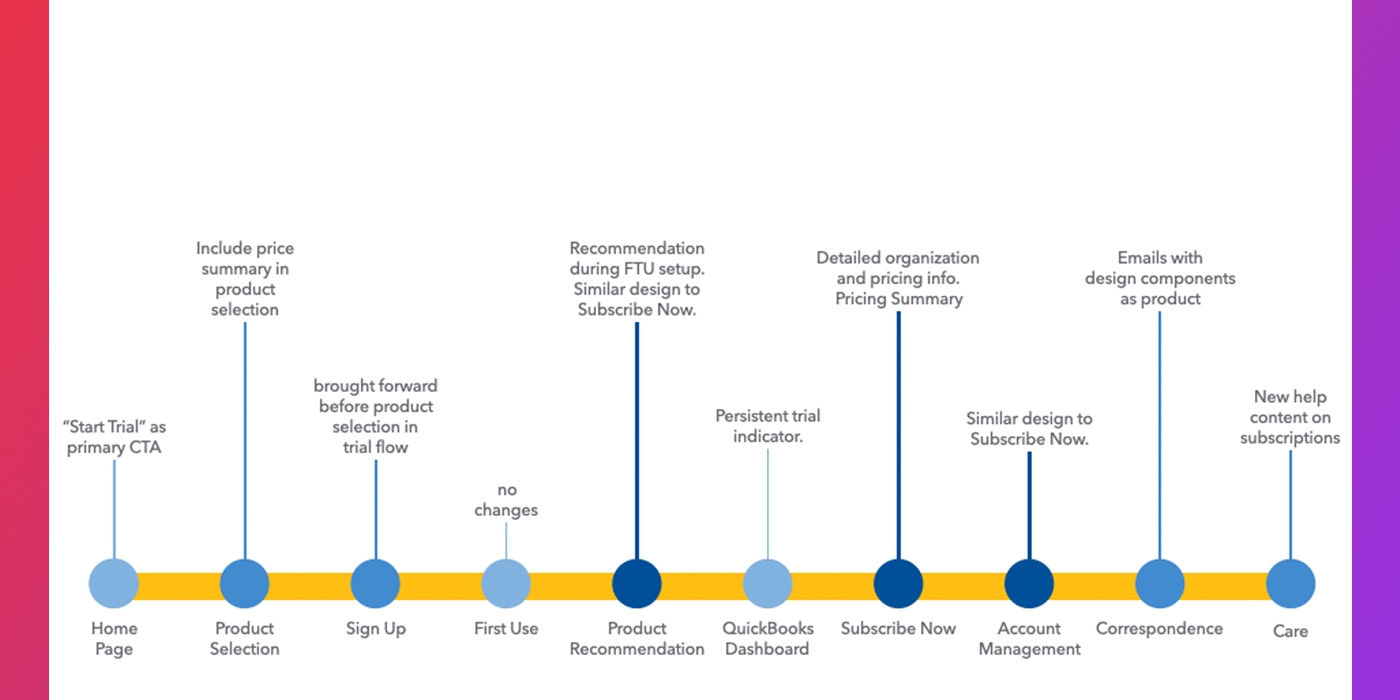Billing, an impersonal, internally focused mechanism with no delight
The state of the subscription and billing experience at the outset of this project was one of outdated, siloed, and utilitarian touchpoints. There was nothing that unified the experience to ensure consistency and logic, and there was no customer experience standard of quality.
To further complicate the project, each touchpoint and process was owned by a different internal team: the team who did emails, the team who did the account management, the team who did the marketing, the team who did the sign-up, etc, etc.
As seen below, the experience lacked cohesion, but more than that it lacked any sense of value to the customer. It was your bill, an unpleasant but necessary part of using a monthly cloud product.

Taking the customer-backed lens to the experience
Before diving into fixing the touchpoints, I suggested we take a step back and evaluate the current state with active and potential customers.
This was done through on-site invitations to watch small business owners who were not customers try and sign up and subscribe to QuickBooks, and by meeting with existing customers in their workplaces to have them show us how the billing and subscription relationship.

We gathered the expectations, pains, and sentiments about steps along the journey for potential and existing customers, and used those qualitative datapoints as inputs for the next phase of analysis: our internal structure and how it supports the subscription and billing experience.
The architecture of the relationship between customer and company
We had customer input, but we needed company input. The system that created this experience was spread across the whole company, not only QuickBooks, but central technology used by other products like TurboTax and Mint, and both product owners and marketing owners.
Taking a page out of Conway's Law (a system will represent its organization), I visualized the subscription and billing relationship, capturing the following "current state" of how we delivered this experience. It consisted of:
- The customer experience stages and their objective in each (aware, interest, buy...)
- The counterpart stages and Intuit's responsibility in each (attract, help decide, sell...)
- The events, touchpoints, policies, technology systems, and internal stake holders for each stage

Creating guiding principles
With the relationship mapped and defined, each stage was given a guiding principle, as was the entire relationship. They were:
- Overall: The customer's subscription experience should be transparent, simple, and self-managed throughout the entire duration of the relationship.
- Awareness phase: Clarity, simplicity, and stability of offering and product pricing. The product lineup is the same across every channel.
- Purchase phase: The customer needs to understand exactly what they're getting
- Onboarding phase: Disruption in the customer's understanding of what they are getting should be kept to a minimum. Upselling offers should be triggered by customer action or profile, not a generic email schedule.
- Ongoing use: Customers should never have to call in to understand or manage their subscription. Communication through the relationship should be as succinct, simple, and timely as possible.
With this slice of our organization and the customer experience codified, blueprinting the end-to-end, surface-to-core of the individual use cases that made up the bulk of painful customer experience and support calls was next.


















